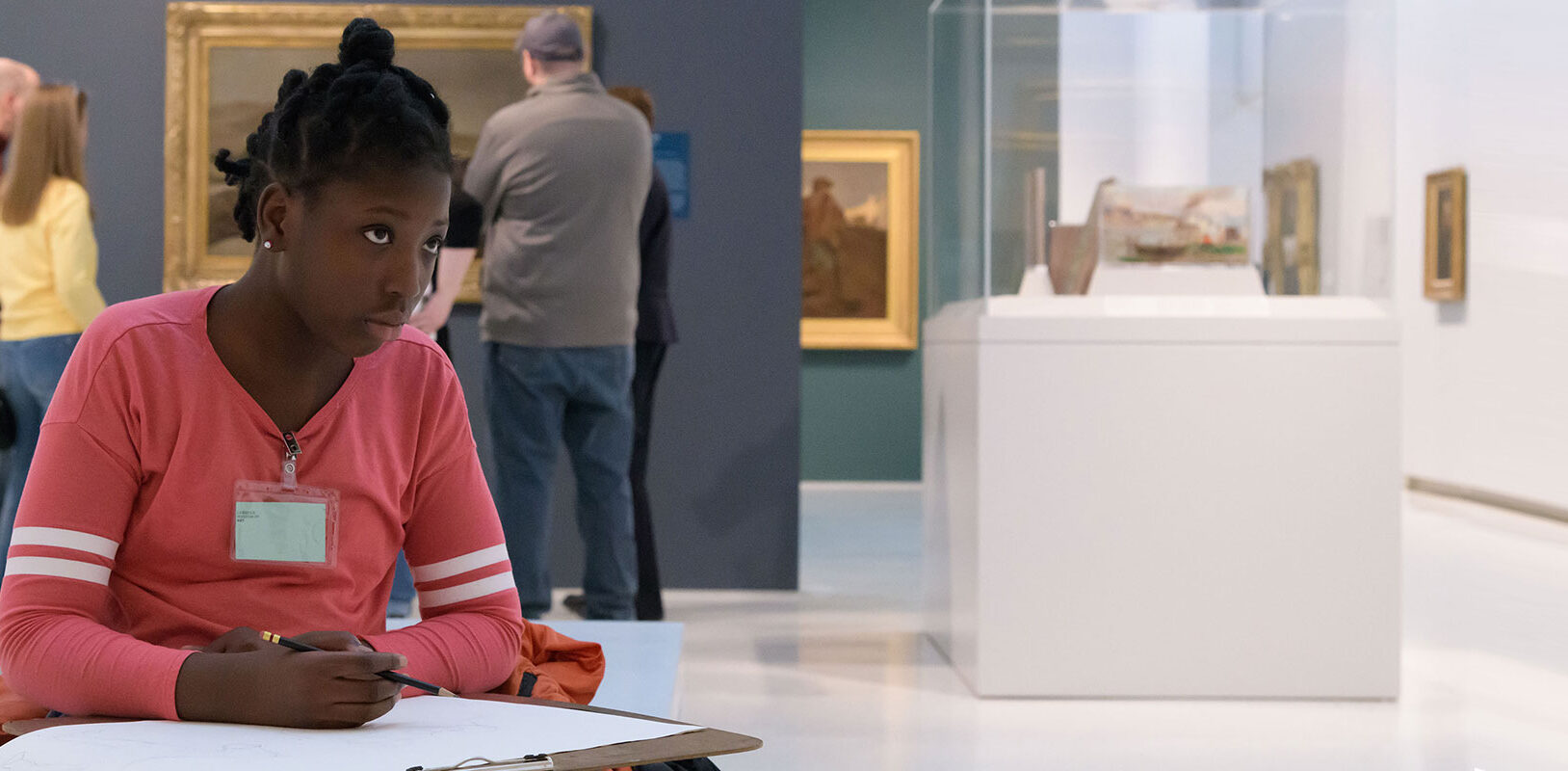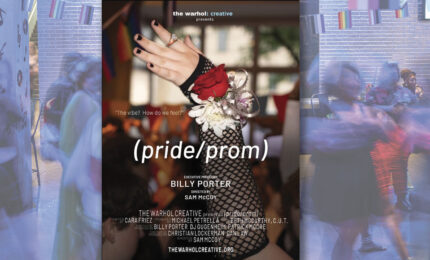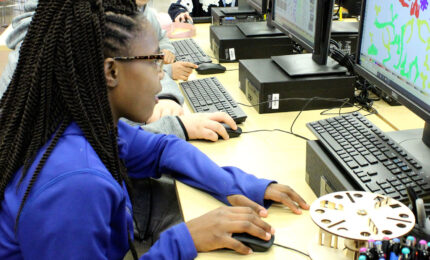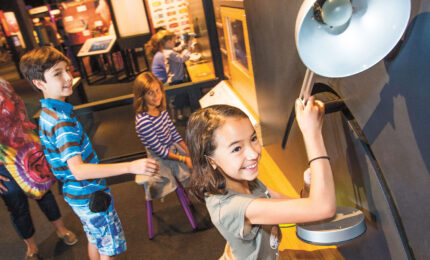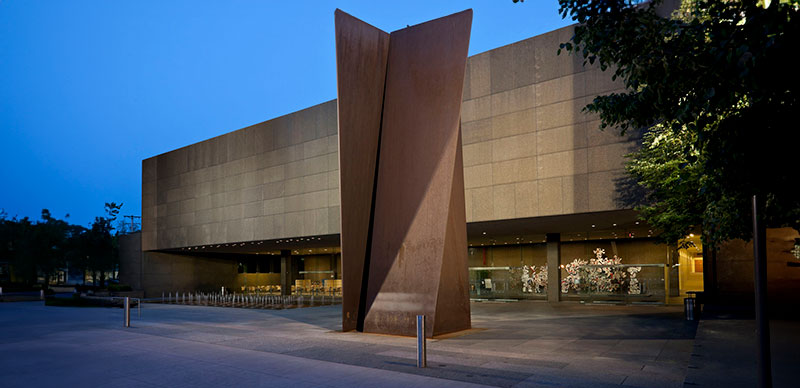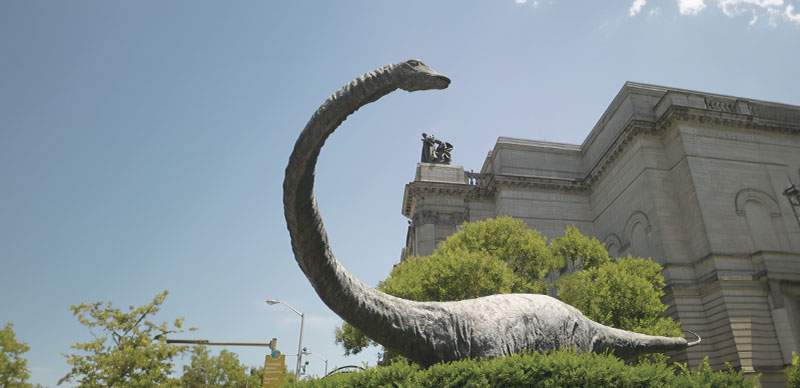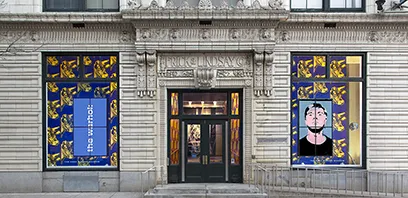Giving Forward
Who:
Dena and Marty LaMar
What they supports:
Carnegie Museum of Art
Why it matters:
“Access to art for the underrepresented is critical, and the museum’s efforts to showcase diverse artists is a huge reason why we support the museum.” – Dena LaMar
It wasn’t hung in his house. It wasn’t mounted on a museum wall or in a gallery. It was on his television screen.
“It was something that I saw on The Cosby Show,” he says.
The 1980s hit family comedy was in its second season when, in January 1986, it aired an episode called “The Auction.” In the show, family matriarch Clair Huxtable wants to purchase a now famous Ellis Wilson piece called Funeral Procession, which in the fictional show she claims was created by her uncle. (Spoiler alert: She wins the auction).
Seeing a Black family engage with art on a deeply personal level changed something in Marty. He discovered that a piece of art could “speak” to people. It’s an experience that he and his wife, Dena, have both shared and hope to foster for younger generations of Black youth through their contributions to Carnegie Museum of Art.
They’ve collected art for decades, but began engaging more deeply with the Museum of Art in the last couple of years since Dena joined the museum’s advisory board. In that capacity, she has advocated for a data-driven approach to increase diversity throughout the museum—be it hiring policies or exhibitions—and supported initiatives like the summer Inside Out series.
Promoting diversity and representation in institutions is something the couple does professionally, as well. Dena is the global chief diversity, equity & inclusion officer for Advance Auto Parts, and Marty promotes and creates economic enhancement and equity in Atlanta, where he is senior vice president of economic development for Invest Atlanta, the city’s economic development authority.
Their involvement with the Museum of Art has allowed them to combine two of their passions—advocating for inclusion and art. Their daughter, Kennedy, has also been involved through an internship at the museum in the summer of 2019, where she assisted the director of community engagement in the planning of educational programming to grow membership and foster networking with the museum.
Similar to Marty, Dena didn’t discover her passion for art through museums. Growing up in Atlanta, she would travel every summer to coastal South Carolina to see extended family. It was on one of these trips to Charleston when she visited Gallery Chuma in the city’s historic district and discovered two local artists—Leroy Campbell and Jonathan Green—whose work explores the region’s Gullah culture, which Dena shares through her South Carolina family. The LaMars have since become avid collectors of Campbell and Green and have their artwork hanging throughout their Pittsburgh home.
Dena enjoys the museum’s Teenie Harris collection and is excited that the museum is showcasing more diverse artists in its exhibits. But she says there’s still work to be done to create more opportunities for younger diverse audiences to have their own personal moments with art. She hopes those moments will happen and spark at a young age.
“A traditional museum can be very intimidating to people who didn’t grow up with art in the home or access to museums,” she says. “I think it is important for the museum’s programming to reflect the community, for the museum to engage with the community, and do more to bring more people in. Access to art for the underrepresented is critical, and the museum’s efforts to showcase diverse artists is a huge reason why we support the museum.”
Marty agrees. And he wants younger kids to make those connections even earlier than he did when, one night, he happened to be watching a television show that changed his perception of art.
“I would love to be able to cut the learning curve for a young Black kid, who could say, ‘Hey, I learned about art and have had an appreciation for its power early. I know about Leroy Campbell, Jonathan Green, and Sharif Bey … I know about all kinds of artists, and some even look like me!”
